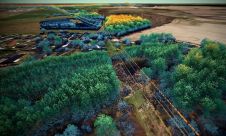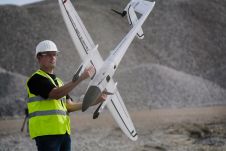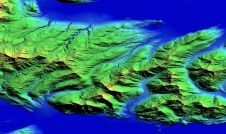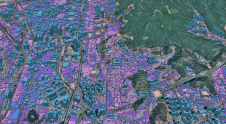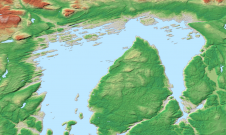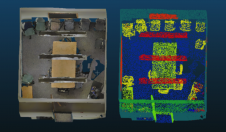New Bathymetric Lidar Sensor Boosts Performance in Hydrographic Mapping
Leica Geosystems, part of Hexagon, has announced the introduction of Leica Chiroptera-5, the new high-performance airborne bathymetric Lidar sensor for coastal and inland water surveys. This latest mapping technology increases the depth penetration, point density and topographic sensitivity of the sensor compared to previous generations.
The new system delivers high-resolution Lidar data supporting numerous applications such as nautical charting, coastal infrastructure planning, environmental monitoring and landslide and erosion risk assessments.
Higher Sensor Performance for More Cost-effective Surveys
Chiroptera-5combines airborne bathymetric and topographic Lidar sensors with a 4-band camera to collect seamless data from the seabed to land. Thanks to a higher pulse repetition frequency (PRF), the new technology increases point density by 40% compared to the previous generation system, collecting more data during every survey flight. Improved electronics and optics increase water depth penetration by 20% and double the topographic sensitivity to capture larger areas of submerged terrain and objects with greater detail. The high-performance sensor is designed to fit a stabilizing mount, enabling more efficient area coverage which decreases operational costs and the carbon footprint of mapping projects.
Leica Geosystems’ signature bathymetric workflow supports the sensor’s performance. Introducing near real-time data processing enables coverage analysis immediately after landing, allowing operators to quality control the data quickly before demobilizing the system. TheLeica Lidar Survey Studio(LSS) processing suite provides full waveform analysis and offers automatic calibration, refraction correction and data classification, as well as advanced turbid water enhancement.
Bathymetric Applications to Support Environmental Research
Combining impressive resolution, depth penetration and topographic sensitivity, Chiroptera-5 provides substantial benefits for various environmental applications such as shoreline erosion monitoring, flood simulation and prevention and benthic habitat classification.
Bundled with the FAAS/EASA certified helicopter pod, the system enables advanced terrain-following flying paths for efficient river mapping and complex coastline surveys. Owners of previous generation systems are offered an easy upgrade path to Chiroptera-5 to add capabilities to their existing sensor and leverage their initial investment.
“第一代翼手目机载传感器was flown in 2012. During its ten years of operation, the system has seen constant evolution that continuously improved the productivity and efficiency of the entire bathymetric surveying industry,” said Anders Ekelund, vice president of airborne bathymetry at Hexagon. “By collecting detailed data of coastal areas and inland waters, Chiroptera-5 provides an invaluable source of information that supports better decision making, especially for environmental monitoring and management, in line with Hexagon’s commitment to a more sustainable future.”
Make your inbox more interesting.Add some geo.
Keep abreast of news, developments and technological advancement in the geomatics industry.
Sign up for free



